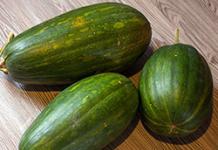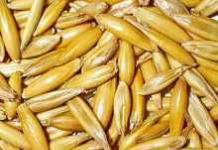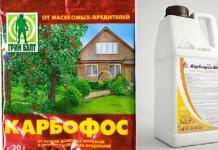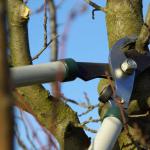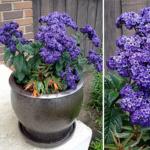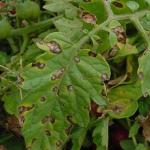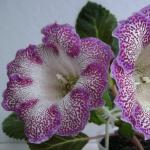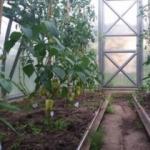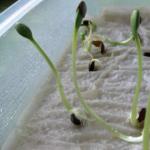Today, in flower beds and flower beds you can find simply a huge number of flowers and flowering plants that amaze with their bright appearance and colorful blooms. However, among them there are also more modest flowers that are a little to the side, but despite this, they simply fascinate with their delicate beauty. Unusual, bright, beautiful fragrant flowers that will be an excellent decoration for any landscape design - all this can be said about the heliotrope flower.
Once you see it bloom and inhale the aroma of its flowers, you will forever love heliotrope and will strive to grow this plant in your garden or on your windowsill. Heliotrope, planting and caring for which in open ground has a number of nuances and difficulties, is one of the favorite flowers of modern gardeners and landscape designers.
In this article we will look at the features of growing heliotrope flowers, the main characteristics of popular species and varieties. Let us note the important rules for planting and caring for this crop.
Features and description of heliotrope
Heliotrope is a fairly well-known perennial subshrub or herbaceous plant that belongs to the Borage family. In Russia, this flower is grown as an annual plant in open ground and as a perennial flower at home. Heliotrope is a guest from the tropics and subtropics, so this unusual flower is often classified as a conditional genus of sun worshipers - plants that turn after the sun. The heliotrope inflorescence, like the sunflower, always turns in the direction where the sun shines. This is evidenced by the name of the flower. In Greek it is translated as following the sun. This culture also has several other names that appeared for heliotrope in different countries of the world: in France it is called the “herb of love” for its wonderful aroma, in England - “cherry pie”, in Germany - “herb of God” for the wonderful history of the flower’s origin . In our country, heliotrope is often called lichen grass or dye litmus.
There is a very beautiful legend about the origin of the heliotrope plant, which is associated with the gods of Ancient Greece. The Greeks said that the beautiful nymph Clytia fell deeply in love with the sun god Helios, but he loved another beauty - princess Leukotha. Clytia got angry and slandered the princess before her father and the sun god. After this, Helios returned to heaven, and the beautiful nymph, falling to the ground and stretching out her hands to the sun, sobbed until her death and looked at her beloved. The rest of the gods took pity on the nymph and turned her into a flower - heliotrope, which always turns after the sun.
The entire genus of heliotropes has approximately 200-300 representatives, which naturally grow in the Mediterranean countries, South Asia and South America, as well as in some areas of Australia and even Russia. You can often find heliotrope as a weed in the European part of Russia and the Caucasus.
Description of heliotrope:
- Heliotrope is a fragrant herbaceous plant that grows in nature as a perennial and belongs to the same genus as forget-me-nots, lungwort, and borage.
- The plant grows in the form of a small branched bush, which in nature can reach a height of 2 m, but in cultivation it grows only 50-60 cm.
- The stem is dense and highly branched, completely covered with oblong, pointed leaves.
- Heliotrope leaves are arranged alternately and are attached to the branches with short petioles; they have a slightly pubescent, wavy or wrinkled surface. The upper leaf blade has a dark green tint, and the lower one is slightly lighter.
- At the very tops of the stems, beautiful inflorescences bloom, which can reach 10-15 cm in diameter.
- The flowers are very small, consist of 5 petals, very similar to lilac flowers. Collected in thyroid inflorescences.
- The color of heliotrope varies from purple to deep blue and light blue.
- Heliotrope flowers contain a very fragrant and valuable essential oil, which is used in cosmetology and perfumery. Heliotrope flowers are often planted on an industrial scale.
- The inflorescences bloom for one month, after which a fruit appears in their place, which is a coenobium.
- After full ripening, the coenobium splits into 4 parts, which contain heliotrope seeds.
- Some types of heliotrope contain poisonous alkaloids in their stems and seeds, which have a detrimental effect on the human nervous system. However, these species are not used in culture.
- In 1552, botanists first isolated a coloring substance from heliotrope, which was later called litmus. Until now, all chemists use special litmus strips to determine the acidity of a medium.
- Heliotrope is a heat-loving plant, therefore in our climate it is used as an annual. You can also grow heliotrope at home. This way it will continue to grow for several years.

Variety of types and varieties of heliotrope
In nature, there are more than 200 different types of heliotrope, but only a few of them have become widespread in culture. Let's consider the main characteristics of the most popular types and varieties of heliotrope in our gardens.
Heliotrope corymbose
- This type of plant is the tallest, which gives it a special decorative effect.
- The plant can reach approximately 100-120 cm in height.
- The bush is formed by fairly powerful stems, from which a large number of branches extend.
- The leaves of this type of heliotrope have an oblong shape and resemble a long boat. The upper leaf blade is dark green and the lower leaf blade is light green.
- Some varieties may have wrinkled leaves.
- Flowering begins in early summer and lasts until frost. It is for its long flowering that this type of heliotrope gained its popularity among gardeners.
- Beautiful and dense inflorescences of blue or blue color bloom at the tops of the stems.
- The diameter of the inflorescences can reach 10 cm.
- Used quite rarely.

Peruvian heliotrope
- This is the most common type of heliotrope, which is grown everywhere by gardeners and landscape designers.
- It is often called a tree species, as this plant grows in the form of a large spreading bush.
- The plant can reach approximately 40-60 cm in height.
- The stem is covered with obovate leaves with slight pubescence and a wrinkled surface.
- Beautiful and fragrant flowers of purple or bright dark blue shade bloom at the tops of the branches.
- The flowers are collected in dense thyroid inflorescences, which can reach approximately 10-15 cm in diameter.
- It has a pleasant aroma that resembles vanilla and cinnamon.
- Pleases with long flowering; inflorescences can decorate the plant until the first frost.
- Widely used in landscape design for single and group plantings.

Heliotrope Kurasawa
- This type of heliotrope is not so popular among gardeners, but it has a beautiful appearance.
- It is a tall spreading bush.
- It can reach approximately 90-100 cm in height, while growing up to 120 cm in width.
- The flowers of Heliotrope Kurasawa have a pale blue or white-blue hue and are collected in oblong and dense inflorescences.
Heliotrope stem-encompassing
- It is also widespread in Russia and is popular among gardeners.
- It is a dwarf species that is widely used for borders and flowerbed edges.
- It is distinguished by a straight branched stem.
- The leaves are lanceolate, oblong, with a beautiful wavy edge.
- Beautiful dense inflorescences of a delicate purple hue bloom at the tops of the branches.
- This type of heliotrope can be planted together with other flowers in the foreground of the flower garden.
European heliotrope
- It is a perennial herbaceous plant, which in our climate is grown as an annual flower.
- The natural habitat of this species is considered to be the territory of the southern part of Russia, the Caucasus, and South Asia.
- It grows in the form of a small bush, which can reach approximately 35-40 cm in height.
- The foliage is oblong and has a yellowish-green tint.
- It features simple white flowers with beautiful curls.
- In our country, this plant is most often used as a medicinal plant and is called lichen herb.

Popular varieties of heliotrope
- Variety "Mini Marine". It is characterized by its short stature, only about 35-40 cm. The inflorescences consist of beautiful violet-blue flowers.
- Heliotrope variety "Dwarf Marin". A low spreading bush that can reach only 30 cm in height. It is distinguished by its bright blue inflorescences.
- Variety "Princess Marina". Also a low-growing variety of heliotrope, which grows only 30 cm. It blooms with inflorescences of an intense bright blue hue, which have a faint pleasant aroma.
- Heliotrope variety "Marin Blue". The height of a plant of this variety can reach 40-45 cm. The inflorescences have an unusual purple hue and a pleasant aroma that is reminiscent of the smell of cherry pie.
- Variety "Chatsworth". The variety has a very strong smell. The inflorescences are colored in an intense purple hue.
- Variety "Job". A plant of short stature, which is distinguished by strong branching. The stems are covered with dark green foliage and beautiful dark purple inflorescences.
- Variety "Alba". Heliotrope of this variety is distinguished by white flowers collected in beautiful inflorescences and a charming aroma of vanilla.
- Variety "Baby Blue". A low growing plant that is great for garden pots and containers. It has a strong scent and lilac-purple inflorescences.
Heliotrope propagation: the most popular methods
Heliotrope propagation is a rather complex process that requires a lot of attention and effort. First of all, you should know that this plant propagates by seeds and cuttings. The second method of reproduction is suitable for warm regions of southern Russia. Let's consider the features of heliotrope propagation methods.
Seed propagation of heliotrope
- This method is quite lengthy and labor-intensive, but in our harsh climate it is the only way to grow a beautiful heliotrope plant on your site.
- The main rule for propagating heliotrope from seeds is that you should not use seeds you have collected yourself. Such planting material may not grow well, and then low flowers with faded and small inflorescences will grow from them.
- For propagation, it is best to use seeds of well-known brands, which guarantee their quality and germination. They must be purchased at specialized garden centers.
- It is also necessary to remember that it is best to grow seedlings from heliotrope seeds at the beginning. This is the only way you can get a flowering plant 12 weeks after germination.
- It is necessary to sow the seeds in February or early March, but not later, otherwise the flower will not have time to bloom before the cold weather.
- First of all, you need to prepare the soil mixture, which should consist mainly of peat and a small amount of sand.
- Before sowing, it is recommended to calcine or steam the soil to destroy existing bacteria that can infect the plant.
- After this, the soil is poured into suitable containers, compacted and heliotrope seeds are sown on the surface.
- The seeds can be sprinkled on top with a small layer of the same soil, but its thickness should be no more than 1-1.5 mm. After sowing, the surface should be watered with a spray bottle and the container should be covered with glass or film to create a greenhouse effect.
- The container should be placed in a warm place where the temperature is approximately 18-20 degrees.
- The first shoots may appear in about 5-20 days, after which the container is opened and placed on the windowsill.
- When the seedlings have 2 leaves, they can be planted in separate pots.
- After 2 weeks, feed the young plants with seedling fertilizer.
- Such seedlings are planted in open ground around June. Heliotropes grown from seeds bloom later, closer to autumn.

Propagation of heliotrope by cuttings
- This method for propagating heliotrope is simpler. It produces better-quality seedlings, but in our climate it is quite difficult to implement.
- To obtain high-quality cuttings, one adult heliotrope bush needs to be dug up, transplanted into a pot and placed in a greenhouse or room with a temperature of 8-15 degrees.
- At the end of February, shoots can be cut from the bush for cuttings. All cuttings should be approximately 10-12 cm. There must be 3-4 internodes.
- After this, you need to remove the foliage from all cuttings.
- Next, the cuttings can be placed for several hours in a root former solution to accelerate growth.
- After this, prepare the soil mixture, which should consist of sand and humus, pour it into a suitable container.
- Root the cuttings into the prepared soil and place the boxes in a greenhouse or greenhouse with good ventilation. It is important that during rooting the temperature is approximately 25 degrees.
- Caring for heliotrope flowers during this period consists of daily watering.
- After about 3 weeks, the cuttings are planted in pots, where they are kept in the shade for the first time and watered frequently.
- Plants are transplanted into open ground in June or July, after pinching the tops for better bushiness.

Preparation before planting heliotrope in open ground
Heliotrope is a tropical plant that is naturally perennial and is accustomed to plenty of sun. In our conditions, growing it is much more difficult, but it is important to prepare carefully. All preparation consists of purchasing high-quality planting material and choosing a place to plant heliotrope.
Selection of varieties and seedlings of heliotrope
- Among gardeners and landscape designers, such types of heliotrope as European, Peruvian and stem-encompassing are especially popular.
- It is the varieties of these varieties that are preferable to be planted on your plots, since among all the others they have long flowering and relative resistance to cold.
- Choose varieties according to a well-thought-out garden composition, since all plants have different heights. Buy taller ones as a background, and low-growing varieties are suitable for borders.
- If you do not have the opportunity to grow heliotrope seedlings yourself, young plant seedlings can be purchased.
- It is necessary to purchase high-quality planting material only from specialized garden centers and nurseries that professionally breed rare plants. This is a rather rare plant in our flower beds, so it is difficult to buy really high-quality planting material.
- Before purchasing seedlings, be sure to check them for damage and signs of disease.

Choosing a place to plant heliotrope
- Planting heliotrope begins with the right location.
- This is a tropical plant, so it needs to be planted in open sunny areas.
- Many gardeners still recommend not planting this flower in direct sunlight, but providing it with a little partial shade.
- The selected location should be protected from strong winds and drafts.
- The ideal place for heliotrope will be flower beds and flower beds. They combine well with other flowering plants. Low-growing varieties can grow well around coniferous crops.
Selection and preparation of soil for planting heliotrope
- These flowers prefer to grow in fertile soils with a high humus content.
- It is also desirable that the soil in the place you choose is loose and well-permeable to moisture and air.
- A well-drained area is the ideal choice for planting heliotrope.
- Before planting the plant, it is important to carefully prepare the soil. To do this, you need to dig it up, about one shovel bayonet deep. During processing, it is recommended to add organic fertilizers and a little coarse river sand for looseness.
Planting heliotrope - step-by-step instructions
- Heliotrope seedlings are planted in open ground when the last frost has passed. Usually this process occurs in June, since growing plant seedlings takes quite a long time.
- Before planting, it is recommended to once again loosen the soil in the area you have chosen, since the plant prefers to grow on loose and light soils.
- Prepare the planting holes. the size of which should be slightly larger than the root system of seedlings with an earthen ball. If you are planting seedlings in peat pots, then the size of the hole should be slightly larger. It is necessary to maintain a distance of 15-20 cm between individual planting holes, since heliotrope grows quite strongly.
- Place a little manure humus and leaf soil at the bottom of each hole.
- After this, carefully remove the seedlings from the pots and place them in the holes. Try not to damage the earthen ball.
- Cover the seedlings with soil, gently pressing the soil to the base of the plant stem.
- After planting, it is recommended to water the young plants generously and mulch the soil around them with peat or sawdust - this will reduce the amount of loosening and prevent moisture evaporation.

Agricultural technology for growing heliotrope: secrets and nuances of care
Caring for heliotrope is absolutely not difficult. Many gardeners compare this process to growing ordinary weeds.
- Watering. If you properly organize the watering of heliotrope, then further care will not pose any problems at all. It is important to water the plant regularly and moderately. Heliotrope is a moisture-loving flower, but it does not tolerate excess moisture. When watering, focus on the soil - if it’s dry, it’s time to water. In dry summers, the amount of watering needs to be increased. This plant also responds very well to spraying.
- Loosening and mulching. After each watering, it is recommended to carefully loosen the soil between flowers. At the same time, remove all weeds. Periodically, you can add a layer of mulch to reduce the amount of loosening.
- Fertilizing heliotrope. If you grow heliotrope seedlings yourself, then fertilizing should begin at this stage. After transplanting into open ground, fertilization should be done every 2 weeks. To do this, it is necessary to use liquid complex fertilizers. Heliotrope needs to be fed throughout the season.
- Wintering heliotrope. This is a tropical plant that is not able to grow in winter in our climate. However, you can save the heliotrope. To do this, before the onset of cold weather, it must be dug up and transplanted into a pot. After this, it is placed in a well-ventilated room with a temperature of approximately 10-15 degrees. During this period, it is important to protect the flower from direct sunlight.
- Disease and pest control. Occasionally, the plant can be damaged by spider mites and aphids. In this case, it is important to treat it with Actellik in a timely manner. At the initial manifestation of gray rot, treat the flower with fungicides. In case of prolonged illness, the plant is removed.
Photo of heliotrope






Heliotrope is a beautiful and delicate flowering plant that has an incredible vanilla scent. Planted on the site, it will become a real exotic decoration for a flower garden or flower bed.
Heliotrope is represented by 250 species in tropical and subtropical climatic zones of the globe. Some of them, in particular the European one, are poisonous due to the content of cynoglossin in their leaves and shoots, an alkaloid that can cause severe diseases of the nervous system in animals.
In the field of floriculture, for the most part, they use Peruvian heliotrope, named after its homeland - Peru, where it grows up to 1.9 meters in height, covered with lovely flowers that exude a vanilla scent. Less common in gardening are heliotropes corymbose and stem-encased.
General information
It is a perennial that has taken root in temperate climates as an annual plant, as happened, for example, with gazania. Its bushes branch with straight spreading trunks, up to 60 cm high. The leaves are not uniform in color, darkish on top and lighter below, pubescent, wrinkled. Inflorescences up to 15 cm in diameter include small, fragrant, dark purple or dark blue flowers, which bloom from the beginning of summer until the first autumn frosts.
It should be noted that the delightful aroma of heliotrope grown from seeds has been somewhat lost in our time, due to the peculiarities of the selective approach, aimed not at enhancing aromatic properties, but at developing decorative ones.
Therefore, the intensity of the aroma may differ during a detailed study of even the same variety, which is why experts suggest smelling the plants before purchasing flowering seedlings - most likely, some of them will smell more distinctly.

Varieties and types
The most popular of the Peruvian varieties in gardens is heliotrope Marin . It is quite compact, with an inflorescence diameter of 15 cm, dark purple flowers and dark green-purple foliage. The standard height of flowers of this variety is 45-50 cm. It takes root well and begins to bloom the same year after sowing.

- a very beautiful variety belonging to the corymboses. Its small flowers create the illusion of light ripples on the water. The variegated inflorescences are dark blue or purple in color, and the leaves are colored like those of the Marin variety. The bush can grow 45 cm from the ground. This variety is very fragrant and looks great in borders.

is a dense herbaceous bush less than 30 cm tall, with fragrant small flowers. Blooms richly and for a long time in summer. Mainly used for landscaping balconies and carpet flower beds.

- a poisonous plant that cannot be used either in gardening or in other areas. It is characterized by a branched stem from 20 to 50 cm in height, oval or almost round leaves, small flowers with curls on the tops of the branches and stem on one side and small pubescent fruits that disintegrate when ripe. Distributed in the southeast of the Russian Federation, in Azerbaijan, growing along roads and weeding wheat crops. If you find this plant in your own flower garden, know that it is better to get rid of it!

- grows up to 50 cm in height, has straight branched stems. The dark green foliage is elongated and heavily pubescent. Small flowers form inflorescences up to 15 cm in diameter, purple, lilac or white in color with a very pleasant smell.

The completely white color of the inflorescences is characteristic of the variety heliotrope Alba . In the variety heliotrope White Lady The flowers are pink but turn white when they open.

Heliotrope planting and care
Planting heliotrope in open ground is impossible without first cultivating seedlings, due to the fact that after germination it takes approximately 100 days before the inflorescences are formed.
Seeds should be sown in the final stages of winter or in the first days of March in a specially prepared substrate consisting of 4 parts peat to 1 part sand. The mixture must be steamed and heated to destroy the fungus.
After filling the container with soil, it is recommended to level it well and compact it a little, then simply scatter the heliotrope seeds over the surface and sprinkle a little soil on top. In the room where the seeds will grow, temperature conditions close to room temperature must be observed - 18-20 ° C, and 22 ° C when sprouts appear.
With the appearance of 2-3 leaves, the plants are planted in containers and watered abundantly. During seed germination, moistening the soil in the greenhouse is necessary, for which the soil is lightly sprayed.
Heliotrope seedlings can be planted in open ground in the first days of June, when the night cooling has ended, in a sunny area with loosened, preferably fertile, humus-enriched soil.
Heliotrope is a sun-loving plant, but it does not tolerate direct scorching rays of the sun. By occasionally pinching out shoots, you can make heliotrope bloom more luxuriantly.

Watering heliotrope
Some gardeners confidently believe that heliotrope should be classified as a fastidious plant, but this opinion is not confirmed if the plant is watered correctly.
In fact, it loves moisture, but really does not like excess water, so it is better to maintain optimal soil moisture - when it dries out, it is worth watering. Moreover, creating conditions of slightly higher humidity, which is typical for tropical zones, by spraying will only be beneficial.
If you mulch the soil with compost or peat, caring for heliotrope will become easier, because you won’t have to loosen the soil often. The loosening procedure itself is mandatory, because this is how the earth is protected from the formation of a crust. Fertilized soil also does not require frequent watering.

Preserving heliotrope in winter
The plant cannot overwinter in open ground. Before the onset of cold weather, it is transplanted into a pot and sent to a well-lit room for the winter. At the same time, the flower is protected from direct sunlight, as a result of which the delicate leaves can acquire an unfamiliar dark shade or even get burned.

Fertilizers for heliotrope
It is recommended to fertilize heliotrope throughout the season, regularly at intervals of 2-3 weeks. Liquid and highly diluted complex mineral fertilizers are excellent for these purposes. 2 weeks after the appearance of 2-3 leaves in the seedlings, begin fertilizing with fertilizer for seedlings.

Heliotrope growing from seeds
Heliotrope is propagated by seeds in February or March in a moist mixture of sand and peat. The boxes are covered with glass or film. After 3-4 weeks, shoots will appear, then you need to move the boxes to a space with diffused light and keep the temperature around them around 22-23°C.
It is better to water with settled water at room temperature. Seed propagation provides heterogeneous planting material with fast-growing seedlings, large bushes, autumn flowering and small inflorescences.

Propagation of heliotrope by cuttings
Based on the above, we can conclude that heliotropes are more often propagated by cuttings. Old individuals cope best with the role of queen cells, producing significantly more high-quality cuttings in the spring.
In winter, queen cells are kept in greenhouses, keeping the ambient temperature in the range of 8-15°C and providing moderate watering. From the 2nd half of the last month of winter until May, cuttings are taken by cutting shoots with 3-4 internodes, pruning leaves to reduce moisture waste.
Cuttings treated with growth compounds are planted in boxes filled with humus and sand in proportions (2:1) and placed in a ventilated, illuminated place under film or glass. While rooting is taking place, the temperature needs to be stabilized at 22-25°C, while watering the plants every day.
After 18-25 days, roots may appear, and the cuttings should be planted in peat pots with a loosened substrate fertilized with minerals, including peat, turf soil and sand in a ratio of 4:2:1.
For the first week after transplantation, the young animals are kept in shady places and sprayed with water 2-3 times daily. By repeatedly pinching the seedlings, you can achieve greater compactness of the adult heliotrope. It is better to plant them in the ground at a distance of 15-20 cm from each other.

Diseases and pests
- Of all the pests of heliotrope's enemies, it is necessary to highlight the flower spider mite, which attacks young shoots and leaves.
- In addition, diseases can be caused by whiteflies and aphids.
It is preferable to combat all of them by using Actellik, repeating the treatment every other week if necessary. Fungicides can be used against gray mold.
Russians have been interested in heliotrope for a long time - these pretty flowers have been growing in gardens and front gardens for decades. Experienced flower growers believe that growing heliotrope is not associated with much trouble. It is enough to master agricultural technology once, and every year the process will be invariably successful.
Although the flower is simple in appearance, it has several features. Knowing them is necessary in order to better feel the plant, appreciate its qualities and grow it with love. Because heliotrope is sensitive to the degree of care.
Characteristics
So, meet:
- belongs to the borage family (there are more than 300 species in this family). It is noteworthy that in translation from Latin Heliotropium means “revolving behind the sun.” During daylight hours, flowers actually turn to follow the sunlight;
- can grow both in open ground and on open balconies;

- has an attractive “design” that pleases the eye of even the most discerning aesthetes (even in Tsarist Russia, heliotrope thickets served as decoration for greenhouses, gardens and parks);
- the flower comes from South America and was brought to Eurasia many centuries ago (therefore it has adapted perfectly and is not inclined to conflict with our climate). The first information about heliotrope was found in the Mediterranean, from where the flower later safely moved to more eastern regions;
- has a pronounced, thick sweet aroma (its strength depends on the variety, the most aromatic is “European”);
- in Russia it feels good outdoors from mid-spring to late summer.
IMPORTANT. Species diversity suggests that before starting to breed heliotrope, you should clarify what characteristics this particular variety has (bushiness, smell, exterior).
Appearance
Leaves:

- lanceolate (oblong, boat-shaped);
- base and apex pointed;
- the lower part is lighter than the upper;
- Green colour;
- the color is rich and uniform;
- dark green veins divide each leaf in half.
Inflorescences:
- on average 2.5-3 cm, the largest grow up to 10 cm;
- located on long legs;
- color - violet, lilac, purple, pink, yellowish-white, white, blue, light blue;



- They look like curls gathered into a corolla.
Plant height:
- some species grow up to 1.5 m;
- the average height of popular varieties is 35-60 cm, some varieties grow up to 1.0-1.2 m (“Kurassavsky”, “Shchitovidny”).
Preparing seedlings
As the experience of past decades shows, the cutting method used to be preferable:
- the flower had a growing season that was too long, which could not be ignored;
- a plant growing in open ground was dug up for the winter;
- was transferred to the house, where he had to be looked after all the cold months of the year;
- Every spring the cuttings were re-introduced into the soil.
IMPORTANT. Some floriculture fans still practice this method. However, he is too troublesome. For beginners, it is advisable to use high-quality seeds, which are sold in abundance through specialized stores.

How to choose seeds
As a result of deep research work, breeders:
- provided increased resistance of the plant to more severe climates (compared to the Mediterranean and South America);
- shortened the growing season;
- made it possible to grow heliotrope to a wider range of gardeners who had not yet reached the pinnacle of floriculture.

Planting seeds for seedlings
Heliotrope seeds are small. You have to work with them carefully and carefully.

Basic Rules:
- start planting in mid-February - early March (this is the deadline);
IMPORTANT. The later the seeds are sown, the higher the likelihood that the heliotrope will bloom towards the end of summer.
- buy special soil at a floriculture store (the correct composition is 4 parts non-acidic peat, 1 part sand);
- heat treatment of the soil is required - steam it in the oven or over high heat;

- then keep for at least 1 day at room temperature. This will protect the plant from fungal infections, which often harm early seedlings;
- plant the seeds in a slightly moist soil mixture;
- fill the seedling tank tightly and evenly (compact the soil as much as you can);
- sprinkle seeds on this soil;
- cover with a thin layer of earth on top, the thickness of the layer is literally 1.5-2 mm (some experts generally advise not to sprinkle earth on top of the seeds, arguing that the seeds have a great need for sunlight);
IMPORTANT. Sprinkling with soil still makes sense. This will protect the seeds from drying out.
- create a temperature regime ranging from 20 to 22 degrees Celsius;
- It would not be superfluous to cover the box with plastic film, glass or plastic;


- when the sprouts appear, move the box to the window - closer to the light, and much heat is no longer required.
Dive
When you are dealing with high-quality seed, seedlings will appear 6-15 days after planting in the box. But there are times when the seeds “slow down”:
- improper care leads to the fact that the seeds do not germinate on time and remain in the ground for 20 or even 30 days;
- in such cases, it is best not to take risks, but to make a new sowing 2 weeks after the first sowing (after all, let the ungerminated seeds germinate a little later, they will not bother you);
- after the plants have sprouted, the first leaves should appear in 15-17 days.
As soon as the sprouts have produced 2-3 leaves, plant the seedlings in separate containers:

- Pots measuring 9x9 cm are ideal;

- if you use peat containers, it can be placed in the ground along with the seedlings;
- the soil for individual pots is the same as when sowing seeds;
- fill the pots above half (about 2/3 of the container level);
- carefully lower the sprout there;
- Gently sprinkle soil around the root and base of the stem;
- press the earth a little with your hands;
- pour water at room temperature;

- After 12-15 days, fertilize with organic matter (fertilizing can be purchased at a specialty store).
Landing in the ground
Success in growing heliotrope depends on the timing of planting in the ground, the quality of the soil, lighting, and also the wind rose:
- it is important that the transplant takes place no earlier than the first half of June. An exception is growing flowers on the balcony (in this case, you can transplant them into balcony boxes in early to mid-May);
- well-fertilized soil with humus is preferred;
- the landing site should be well lit;
- be sure to protect the heliotrope from the wind (the plant does not like drafts).
- place the seedlings at a distance of 20-25 cm from each other (this flower does not like crowding) - keep in mind that the flower will grow later;
- Sprinkle some wood ash at the bottom of the holes;

- water the seedlings at least 2 times a week;
IMPORTANT. During the dry season, increase the amount of water. Make sure that the soil at the roots does not dry out. However, flooding the plant is strictly prohibited. A slight moisture deficit is better than excess.
- Fertilize the soil every 2-3 weeks (alternate mineral and organic fertilizers).
Heliotrope care
If all the steps are followed correctly, around mid-June the heliotrope will bloom profusely and your flower beds will sparkle with bright colors. After all, you probably planted different varieties? A linear striped or ring planting looks very good: one color alternates with another.

- do not forget to remove dried flower stalks;
- this measure will help prolong the flowering of the bush;
- Regular watering, loosening and weeding will also increase the vitality of the plant and help the flowers stay on their legs longer.
Video - Growing heliotrope from seeds
Perennial option
As was said at the beginning of the article, the long-term option of growing heliotrope is quite troublesome. To get to know the flower well, it makes sense to start with annual seed planting. Give yourself at least a couple of years to master the technology perfectly.
But there is also a very specific way to grow perennial heliotrope:
- when growing an annual plant, of course, the onset of the first frost does not worry the grower - after all, the dead flowers will be disposed of for compost anyway;
- for a perennial, it is much more important to be in time before frost - the plant should in no case be damaged;
- trim the bushes in advance almost to the root (this should be done around the beginning of October);
- leave in this form for a week and a half (so that during this time the cut stems dry out a little);
- dig up the roots (leave a ball of earth on them);
- place in pots and sprinkle with peat;
- lower them into a cellar or basement, where the plants will be perfectly preserved until next spring.
IMPORTANT. The storage temperature should not be lower than plus 14-16 degrees.
The following year, heliotrope roots overwintered in peat:
- remove from the cellar or basement in the first half (with a guarantee that the frost has passed);
- first moisten a little;
- stand in the open air for a couple of days;
- plant in the same holes or in a new place (sprinkling the bottom of the planting holes with wood ash);
- Sprinkle with soil and water with cold water.
Heliotropes feel the grower's love well. In those gardens where this flower has taken root on the first or second attempt, it will grow safely every year, and so on for decades. It is preferable not to change the location of the flowerbed and not to experiment, but to create one permanent place for it - one where the flower has enough moisture, light, heat and calm.
Heliotrope is one of my favorite plants. This is a subshrub with wrinkled, stiff-haired leaves and small, strongly fragrant flowers, collected in dense corymbs. The dark blue or purple flowers of heliotrope have a vanilla scent. They look great in my garden next to yellow rudbeckias, with flowering pelargoniums of various colors.
Heliotrope can be grown from seeds, and adult plants can also be kept in the house in winter for further cuttings.
Sowing heliotrope seeds
Heliotrope has very small seeds; they are sown in February. Therefore, it is not easy to grow good heliotrope seedlings, especially for novice gardeners.
In addition, when grown from seeds, heliotrope bushes in the garden grow wildly and quickly turn into tall plants. However, such young specimens bloom closer to autumn, forming not very large inflorescences.
But I really want to enjoy the fragrance and beauty of large heliotrope inflorescences earlier and longer!
And then I began to preserve and cut this plant in winter.
Storing heliotrope queen cells in winter
I dig up heat-loving heliotrope from the garden in the fall, before the first frosts. I transplant the mother plants into pots and bring them into the room.
In autumn and winter, heliotrope needs additional lighting. Therefore, I place the plants on shelves under fluorescent lamps, where the heliotrope continues to bloom.
I maintain the temperature of the mother plants in the house at +15..+18 degrees so that the heliotrope does not produce weak shoots.
Heliotrope cuttings
For early flowering seedlings, I start cutting heliotrope in the winter, at the end of January-beginning of February. Cuttings can be carried out in early spring, but then the seedlings will bloom later.
I cut young green shoots from the mother plants and plant them in prepared peat humus tablets (jiffy-7).
Heliotrope cuttings successfully take root in a mini-greenhouse. I usually use clear cake lids or other clear plastic packaging for this purpose.
I illuminate rooting heliotrope cuttings for 10 hours a day.
You need to watch when the first roots from the rooted cuttings appear through the mesh of peat-humus tablets. Then I plant the young plants in pots (7 cm in diameter) along with the tablet, after carefully removing the mesh from it.
I let the heliotrope cuttings take root in the pot after transplanting. And as soon as they grow a little, I pinch them to get lush bushes with several inflorescences.

As the rooted plants develop, I transfer them into larger pots.
Planting heliotrope in the garden and caring for plants
I plant heliotrope seedlings in the garden in early June, when the threat of return frosts has passed. And I dig the individual, strongest bushes into the soil of the garden along with pots, so that in the fall I can leave them as queen cells for cuttings next year.
For planting heliotrope, I choose a sunny place with loose, permeable soil.
soil. I add leaf and manure humus to the hole.
During the summer, I give the seedlings liquid fertilizing with mineral and organic fertilizers twice a month. I usually use Kemira Lux and Ideal fertilizers, to which heliotrope and other plants respond very well. Fertilizer irrigation enhances the development of seedlings and promotes excellent flowering.
I wish you success in growing heliotrope! http://www.gardenia.ru/pages/geliotrop001.htm
Heliotrope - growing in the garden.
Heliotrope is a perennial subshrub belonging to the borage family. The shrub's place of origin is South America. Because the plant's flowers face the sun, heliotrope is also called Peruvian sunflower. But the flower is much smaller in size, reaching a height of about 40 - 60 cm. Heliotrope has large leaves, about 7 cm in length, oval in shape, with grooves and small hairs. The small flowers of the plant are collected in large inflorescences, the length of which ranges from 10 to 20 cm. In the evening, the flowers emit a pleasant vanilla aroma, so it is recommended to place them closer to the house or plant them in tubs and hanging flowerpots. Heliotrope flowers can be of various colors: white, lilac, violet, blue. The plant blooms profusely from June until the onset of the first frost. In temperate climates, heliotrope is grown as an annual plant. When caring for the plant, remember that it is poisonous!
Any well-drained, loose soil is suitable for planting on the site. It would be a good idea to fertilize the soil before planting the semi-shrub in it. Heliotrope prefers good lighting; if it is not enough, the stems become very elongated, and the flowers become smaller and lose their brightness of color. But the plant does not tolerate direct sunlight. Young plants need to be given plenty of daily water and misted regularly during the summer months to maintain adequate humidity for successful growth.
If you take heliotrope indoors for the winter, the temperature there should be at least 7 °C. In winter, a plant kept indoors should be watered as the earthen clod dries out.
If rust appears on heliotrope, it is caused by a fungal disease. Those parts of the plant that have been affected should be removed. If the plant begins to turn yellow and its leaves fall off, then most likely it has been attacked by spider mites. To solve this problem, you need to spray the bush with clean water several times a day.
Heliotrope is propagated by seeds or cuttings from plants that have overwintered in warm conditions. Seeds should be sown superficially from January to April, as they are very small. The sown seeds are covered with glass (germination temperature - 18 - 21 °C), and the seedlings that appear after 2 - 3 weeks are planted. A little later, having transplanted the stronger plants into pots, they are placed in a warm place. Heliotrope can be planted in open ground in May. Plants grown from seeds will bloom closer to autumn, and in this case the inflorescences will most likely not be very large.
For spring propagation by cuttings, it is necessary to dig up the plant in the fall before the first frosts set in and transplant it into a pot. During the winter months, heliotrope will need additional lighting, which can be provided using fluorescent lamps. The optimal temperature for heliotrope content during this period should be 10 - 15 °C. Therefore, a cold window sill is best for the winter period.
If you want to achieve wounded flowering, in this case you should start cuttings in February. You can carry out this procedure in the spring, but this will shift the flowering time of the heliotrope. Young shoots with 3 to 4 internodes should be cut from the prepared plant and rooted in a loose substrate. The required lighting is 10 hours a day, and the temperature is 25 °C. After 3 - 4 weeks, after the seedlings have formed roots, they are planted in pots with a diameter of about 8 cm. To do this, prepare a soil mixture of turf soil, peat and sand (2: 4: 1).
Heliotrope can be planted in open ground after the threat of frost has completely passed; it is optimal to do this in late May - early June. The tallest and healthiest specimens can be dug into the ground directly in pots to be used in the fall to prepare cuttings from which new plants will be grown.
Heliotrope is translated from Greek as following the sun. Its flowers rotate as the star moves from east to west. Therefore, in this article we will examine the topic: heliotrope planting and care in open ground photo.
Belongs to the borage family. Grows in the lands of South America and Mediterranean countries. Does not exceed sixty centimeters in height. There are about three hundred species.
Europeans loved it for its scent with notes of vanilla. Widely used in medicine, cosmetology, landscape design.
Know! It also has poisonous species, which, thanks to their juice, can paralyze humans and animals. Typically, such species are not used for breeding.
In an apartment, it pleases with its presence for many years, but in the garden it is grown as an annual plant.
Origin
It was brought from South America to Europe during the Great Geographical Discoveries. It appeared in Russia only in the 18th century, but due to the difficulty of breeding, in the 20th century it lost popularity among gardeners. Some species also grow in the Mediterranean.
Types, varieties
It has many varieties, but only three varieties are used in gardening:
- Peruvian (tree-like);
- stem-encompassing;
- corymbose.
The first class is the largest; bushes can grow up to a meter in height. The caps are monochromatic, but there are species that change color to white when blooming. It is frost-resistant, so it retains color until frost. More often than others it is used in landscape design.

The second variety is heat-loving, small bushes that do not exceed half a meter in height. The last genus blooms most profusely and has caps of various colors from pale lilac to dark purple.

The most popular varieties of tree heliotrope:
- Marin is a small class, not exceeding half a meter in height. In summer it delights with the appearance of bright purple flowers. In order for the bush to bloom in the first year after sowing, proper care is necessary.
- Marine Blue is a small variety, barely exceeding fifty centimeters in height. The inflorescences have a purple tint.
- Sea breeze. – also, the specimen is small in size, has large flower heads and a pale purple hue. Introduced from South America. It takes root well in an apartment, but also looks great in the garden.
- White Lady is one of the most interesting classes. This is due to the fact that the pink buds of this variety change color to white when they bloom.
- Princess Marin is a miniature bush, no more than half a meter in height. The aroma is not pronounced, the inflorescences are purple and bright.
- Regal Dwarf is a miniature species that will fit perfectly into a small garden.
- Freygrant Delight - has a wide variety of colors: from lavender to bright purple. It has a pronounced vanilla aroma.
- Baby Blue - small bushes designed for growing in large pots or flowerpots. The color of the inflorescences is purple and bright.
Features of cultivation
If you grow flowers using seeds, then it is better to give preference to those bought in a store and only from trusted companies. Heliotrope grown from seeds of our own production grows worse, and they bloom without much enthusiasm. 
You need to know how to grow this flower. The main rule is to moisten the soil in a timely manner. Water as the substrate dries; on hot days, the amount of water increases.
You also need to pay enough attention to loosening the soil and removing weeds. The procedure must be carried out very carefully after watering.
Remember! Fertilizers are applied to the soil once every fourteen days, until the first flowers appear.
Reproduction methods
Propagated in two ways: seeds and cuttings. For the first method, it is better to choose purchased seeds. They are planted at the end of winter, beginning of spring, in a special soil of peat and sand. The box is covered with film and transferred to a warm place. The first shoots will appear after about a month. After the rudiments appear, the tray is placed on a windowsill without direct sunlight with a temperature of at least 22 degrees Celsius. The shelter is removed. Watch the video: how to sow heliotrope seeds correctly.
It is much easier to propagate a plant by cuttings than by seeds, and inflorescences appear on cuttings much earlier. Cuttings occur in winter: from late January to mid-February. The procedure will not take much time and effort. The preparation is carried out according to the following scheme:
- In the fall, before the first frost appears, move the main plant to a warm room.
- To obtain cuttings, take the strongest and most abundantly flowering ones.
- In winter, the bush is kept indoors where the temperature does not rise above twelve degrees. This is due to the fact that in the absence of sunlight and high temperatures, the specimen becomes elongated and does not produce a large number of high-quality cuttings.
- At the end of January or beginning of February, young shoots are cut with a sharp, disinfected knife.
- The cut of the resulting cuttings is treated with a means to stimulate the growth of the root system and, after harvesting, they are planted in peat tablets.
- The tablets are placed in a deep container and covered with film or a transparent lid. This is done for rapid growth of cuttings.
- When the roots are visible through the mesh in the tablets, the young animals are transplanted into small pots.
Important! After the specimen has taken root, pinching is done to form a more squat and branched bush.
Heliotrope from seeds (sowing, caring for seedlings)
The optimal time for planting seedlings is late February, early March. Landing is carried out in the following way:
- Before sowing, the soil is prepared. It should consist of peat and sand (in a ratio of 4:1).
- The soil is sterilized to prevent fungal diseases.
- Seeds are placed in a pot of soil and evenly distributed over the surface of the soil.
A thin layer of earth begins on top of the grains, sprayed with a spray bottle. - The box or pot is covered with film and placed in a warm place with a temperature of at least 18 degrees.
- When sprouts appear, the container is placed on a windowsill with a temperature of at least 20 degrees. You should avoid bright sunlight.
- When two leaves appear on the stem of the young, they are examined in different pots, the diameter of which should not exceed 10 centimeters. Watering should be frequent, but the soil should not be saturated with moisture. The place of detention must be shaded.
Remember! Seedlings are fertilized 14 days after transplantation.
Heliotrope planting
Choice of location, soil. The flower is a light-loving and not cold-resistant flower. Therefore, he needs to select the sunniest area on the site. Loves fertile, loose, well-drained soil.
Bushes are planted in a flowerbed at the beginning of summer, but only if the frosts have stopped at night. The location of the flower bed plays a huge role. It should be sunny, without even the slightest shading. The soil should be fertile, light and well-drained. If the soil contains a large amount of clay, it must be mixed with peat and sand.

The plant should not be planted near water bodies or in low-lying areas. Before planting, you need to dig holes and fill them with humus. Then place the flower itself in the hole. In this case, under no circumstances should the integrity of the earthen coma be violated. After which the young growth at the base of the stem must be sprinkled with humus and watered.
Bushes must be planted at a distance of half a meter from each other. Watering for two weeks, after planting, is carried out no more than 3 times a week. Then as the soil dries.
Heliotrope care
Unlike seedlings, mature bushes are watered as the soil dries. Heliotrope is of tropical origin, so creating high humidity through regular spraying will have a positive effect on its growth. Treating the soil with mulch will make the issue of watering much easier. It will retain moisture in the soil and prevent weeds from appearing.
Know! Fertilizing is carried out every two weeks before flowering using mineral fertilizers.
If the flower is kept at home, the pot with the bush must be placed in the sunniest place. In hot summers, the flowerpot is placed on an unglazed balcony or the room is well ventilated.
Fertilize at home throughout the entire flowering period. Moderate watering and regular spraying are also required.
To obtain flowering during the cold period, the plant must be kept in a room with a temperature of 17-20 degrees, and additional lighting must be provided. And in the summer you will have to stop flowering by cutting off the formed inflorescences.
However, in winter there may be problems with maintenance. At high temperatures and the absence of sunlight, the stems stretch, shedding the lower leaves, exposing the stem.
For an ideal winter stay, a room without heating or an insulated loggia with a temperature no higher than twelve degrees is suitable. At low temperatures, the plant goes into suspended animation and can easily overwinter until spring. If the room temperature is below ten degrees, then it will shed its leaves, but in the spring you can expect the appearance of young leaves on the stem.
This plant will also not like too dry apartment air during the heating season. The leaves will react negatively to such conditions and will begin to curl from the edges.
Remember! Your pet needs regular air humidification. This problem can be solved by spraying or using a special device.
But the flower will react negatively to abundant watering. The appearance of root rot will indicate improper maintenance. However, the soil should not be allowed to dry out completely.
At the beginning of spring, young branches appear at the bush, and the plant begins to grow. The amount of water is gradually increased. At the moment when the pot becomes small, it is transplanted into a new container.
Creating a standard tree
It will take several years of work to create a tree. To do this, you should choose the strongest specimens with large leaves and an even central shoot. The next step is tying the flower.
As the plant grows, the lower lateral shoots are removed. A few months later, when the future tree reaches the desired height, the top is pinched and you can begin to form the crown.
Sections of all pruned shoots, when forming the top of the tree, can be used to create new bushes.
Heliotrope flowering, how to collect seeds
In the conditions of our country, the seeds do not have time to ripen. Therefore, it is better to give preference to purchased seeds; they grow better and bloom more readily.
Although if you want to try to collect grains, you need to wait until the inflorescence turns black and dries. After this, it is cut off and the seeds are collected from the boxes. They must be dried and stored in a dry place.
Pests and diseases (treatment)
- whitefly;
- spider mite
Folk remedies will help against aphid attacks. Aphids breathe through the skin, so a solution of soap will help to combat them, which will block access to oxygen. We also must not forget about the natural enemy - the ladybug. To do this, dill or mustard is planted next to the flowerbed to attract beneficial insects.
An infusion of garlic will help in the fight against whiteflies. To get it, you need to take one hundred and fifty grams of garlic, crush it and add a liter of water. The product should infuse for a week. The infusion turns out to be very concentrated, so a tablespoon of the product is diluted in a liter of water and sprayed on the bushes. If there is a large invasion of whiteflies on flowers, it is necessary to resort to chemicals.
The whitefly also takes root well in apartments in the autumn. High humidity and temperature are the best conditions for its habitat. At home, to combat this insect, special sticky traps are used, as well as folk and store remedies used in the garden
Remember! Spider mites appear in dry weather and are the most difficult to defeat. Garlic infusion or insecticides are suitable as a control.
When using a chemical, you must strictly follow the instructions without violating the dosage. To overcome a harmful insect, several approaches are required. The first step is to spray the solution. The affected specimen is covered with polyethylene so that there is no access to air. After a day, the bag or film is removed, and the procedure is repeated after about a week.
Diseases appear due to excessive watering. In order to prevent the development of root rot, the plant must be treated with fungicides aimed at combating the fungus.
Combination with other plants
Heliotrope looks great in a flowerbed in combination with petunia, begonia, coleus, rudbeckia, and coreopsis. Quite often its bushes are used to decorate borders, as well as for growing in large pots and flowerpots. Purple and blue inflorescences go well with white, yellow, red, pink flowers. A wonderful pair in a pot will be red zonal pelargonium, ageratum, colored nettle, and petunia.
In the flowerbed it goes well with medicinal calendula, marigolds, phlox, Chinese carnation and callistephus.
Heliotrope in landscape design
It is popular in landscape design for creating gardens in the noble style and more. Bushes are used to create flower carpets and potted arrangements. Most often, the Peruvian variety is used in design; the last two types can be found a little less often.

Squat specimens are used to create flower arrangements, since heliotrope does not like shaded areas. Due to lack of sunlight, the leaves wither and the inflorescences become smaller. Also in the design it is grown in a pot in the form of a standard tree.
The healing properties of heliotrope
However, it is worth remembering that the plant juice contains a substance that has a detrimental effect on the circulatory system of the liver, which provokes its destruction. The lungs, heart and central nervous system may also be affected. For example, in Germany it is prohibited to sell medicines containing this plant.

Heliotrope is also popularly called home lilac. Previously grown in noble gardens, it will now become a decoration or a central accent in any modern garden. With proper placement and care, the plant will delight you with its flowers for a long time. All this is necessary for a gardener who wants to have a good understanding of the topic: heliotrope planting and care in open ground photo.


